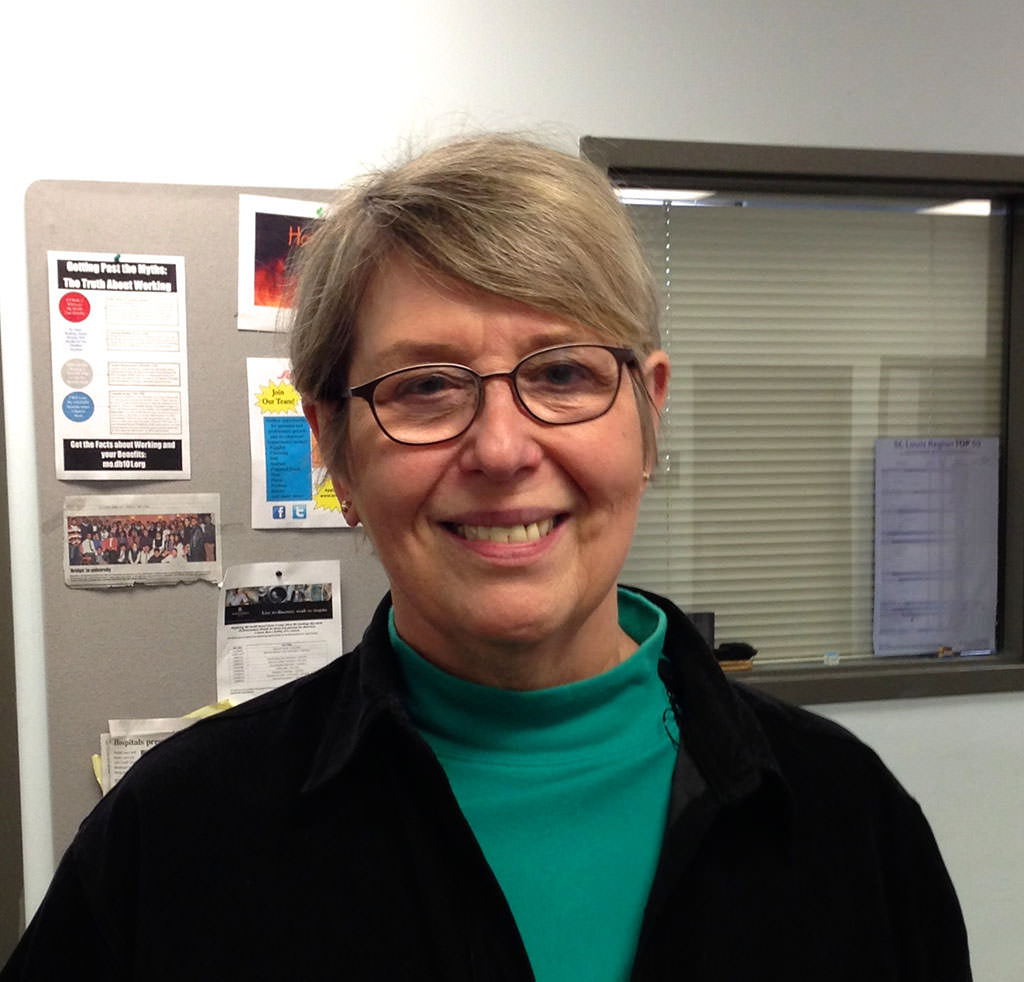
The best day for me was when we were able to expand and help people in crisis. You see them as individuals who have so many things going against them. We can help them have a happy life. It may not be the happy life that anyone would choose for them, but it is a life — one they would like.
1. What led you to the mission of being a social worker in psychosocial rehabilitation?
Social work has been a part of my life since I was a kid. We always did something for our community. That was just what life was about. I was trained as a teacher and as a teacher we talked about the same things as social workers, but used different words.
I came to Places for People quite by accident. I was going to go back 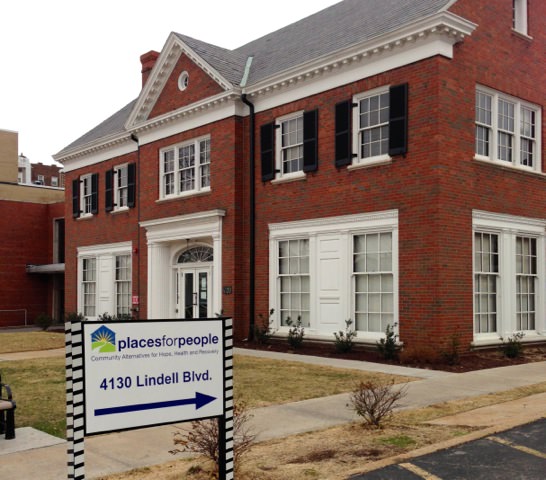 to teaching. I had taken a vacation and I was mid-semester. My friend said, “Oh you’ve got to come down and help me.” I said, “OK. I’ll come down and help you.”
to teaching. I had taken a vacation and I was mid-semester. My friend said, “Oh you’ve got to come down and help me.” I said, “OK. I’ll come down and help you.”
Thirty-four years later, I’m still here. I just really liked it. I do this work with people who have specific difficulties such a having a thought disorder or mental illness. We make it so people can learn the things they need to do to have a happy life.
I had to have a minimum of a bachelor’s degree in education, psychology, social services, or some helping related profession. Occupational therapy would be really good because you look at functioning levels. That’s what we work with as social workers, but over the years, we have become more closely associated with medical treatment.
You have to be able to ask a person, “Well, where do you want to be in six months? What do you want your life to look like?” Those are the kinds of questions that we start with. Those are the questions that we all ask here.
2. What does this mission mean to you?
There is a value to this work. All social means is that you are going to be able to work with people. It’s nothing alien. It is something that is very much a good thing. I wish we had more of it.
I think that these days we don’t think to work with community any  more. We are more likely to celebrate the individual in a way that tells them they don’t have to be a part of the community. But now I have young people, visitors, who come here and I show them the how important community is. I introduce them to the people here.
more. We are more likely to celebrate the individual in a way that tells them they don’t have to be a part of the community. But now I have young people, visitors, who come here and I show them the how important community is. I introduce them to the people here.
A lot of visitors are terrified because the only thing they know is Jeffery Dahmer and Dexter on television. What they don’t realize is that the people here are not predators, they are more likely victims. More times than not they get the short end of the stick and are the victims of aggression. They are the people on which the crime has been committed.
It is hard to live with mental illness. For instance there are types of schizophrenia. Some people have it, they are treated, and are fine. The second group takes medicine and they go and have a life. We work with that the third group – the harder group. With this group, the medicines don’t work. Things are not so good. It’s like with diabetes. Some people are fine with medicine and with others it is a mess.
Most of us here think of mental illness like some think of diabetes. 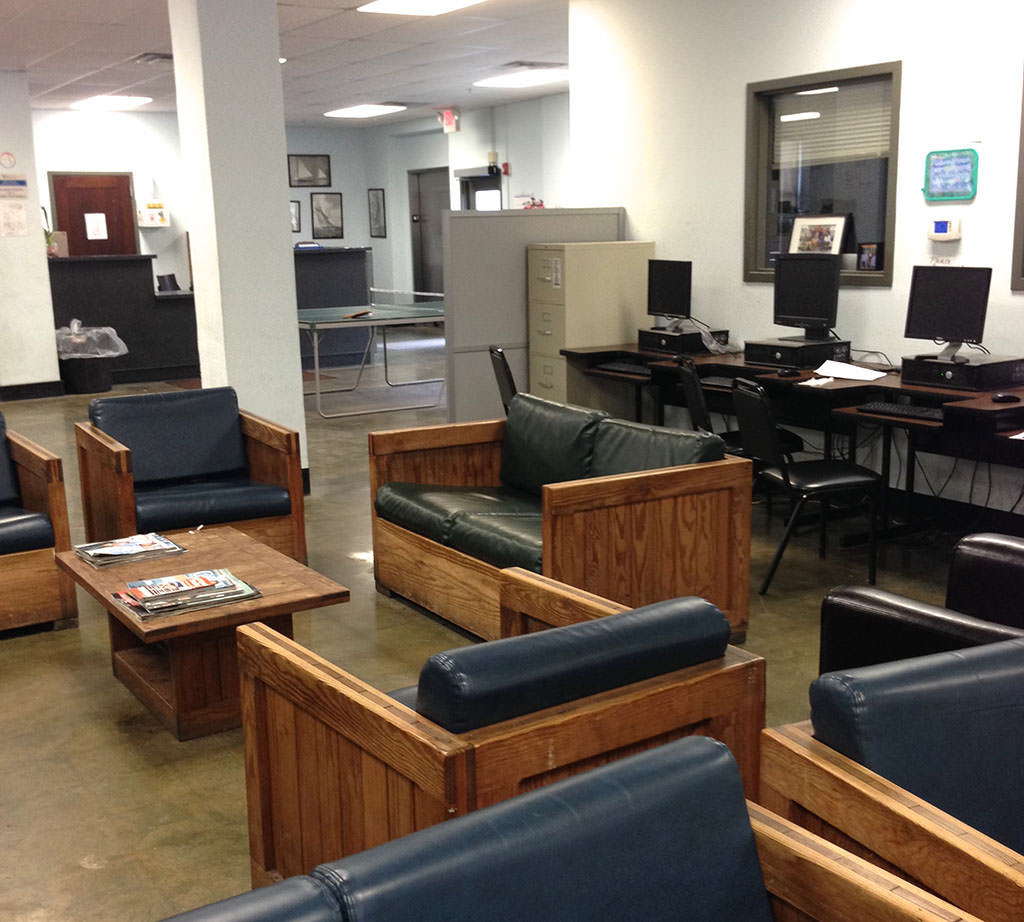 There is medicine. There is treatment. It is like other illnesses. We just don’t know the way to make it stop. When people come in I tell them that it is just like working with anyone else that has a problem – physical or mental. It’s how you think about it. If you think of it as something that is so horribly debilitating that you can’t do anything — that is one thing. But if you think, “Maybe I can’t do this, this, and this, but I can do this,” then you work with what you can work with.
There is medicine. There is treatment. It is like other illnesses. We just don’t know the way to make it stop. When people come in I tell them that it is just like working with anyone else that has a problem – physical or mental. It’s how you think about it. If you think of it as something that is so horribly debilitating that you can’t do anything — that is one thing. But if you think, “Maybe I can’t do this, this, and this, but I can do this,” then you work with what you can work with.
Most of the time people come here and see the gentle nature of the people here or the spiritual quality that has helped them sustain themselves. That can be catching to visitors and soothing to people. I’ve seen young people who come in and are in the midst of turmoil in their own life. They will spend a couple of days with our folks and all of a sudden their life looks a little different. I’m always amazed at that. Providing that opportunity is really good.
3. What was your best day as a social worker in psychosocial rehabilitation?
The best day for me was when we were able to expand and help the kinds of people we see and help people in crisis. We had people on the street that were in need of help, but because there was no funding source, nobody knew what to do. We had people in this neighborhood during the crack epidemic. There were all these people who had been cut off of social security. Social security mandated so many years of cleaning up their act and then being cut  off from benefits.
off from benefits.
Then came a new funding stream. We got a grant and all of a sudden I was able to open the door to all these people. Instead of saying, “Go away. Go away. Go away,” I could say, “Come on in.” We could help them or refer them to some place else. It was nice to be able to bring people in and help them. We could help the homeless. We could help people who were living on the street and were obviously mentally ill. Because some had never been in a state hospital, they weren’t hooked into any system. Now we could open our doors and help them. That was a really good day.
We have some incredible stories. There was a woman who grew up and was very smart and very bright. She was pretty. She was what every person would want as a daughter. She was engaged to be married. But she was also the age that people get sick, mentally ill. Things went from bad to worse. She went to college for a couple of years, but couldn’t continue. She wound up pregnant and unmarried. Her child was given up for adoption. She went into a number of institutions – one right after the other.
Her dream was to get out of the hospital and live in an apartment. We brought her to our group home. She needed to be seen by a social worker at least three times a day. People were there morning noon and night. They were able to give her medicine and make sure 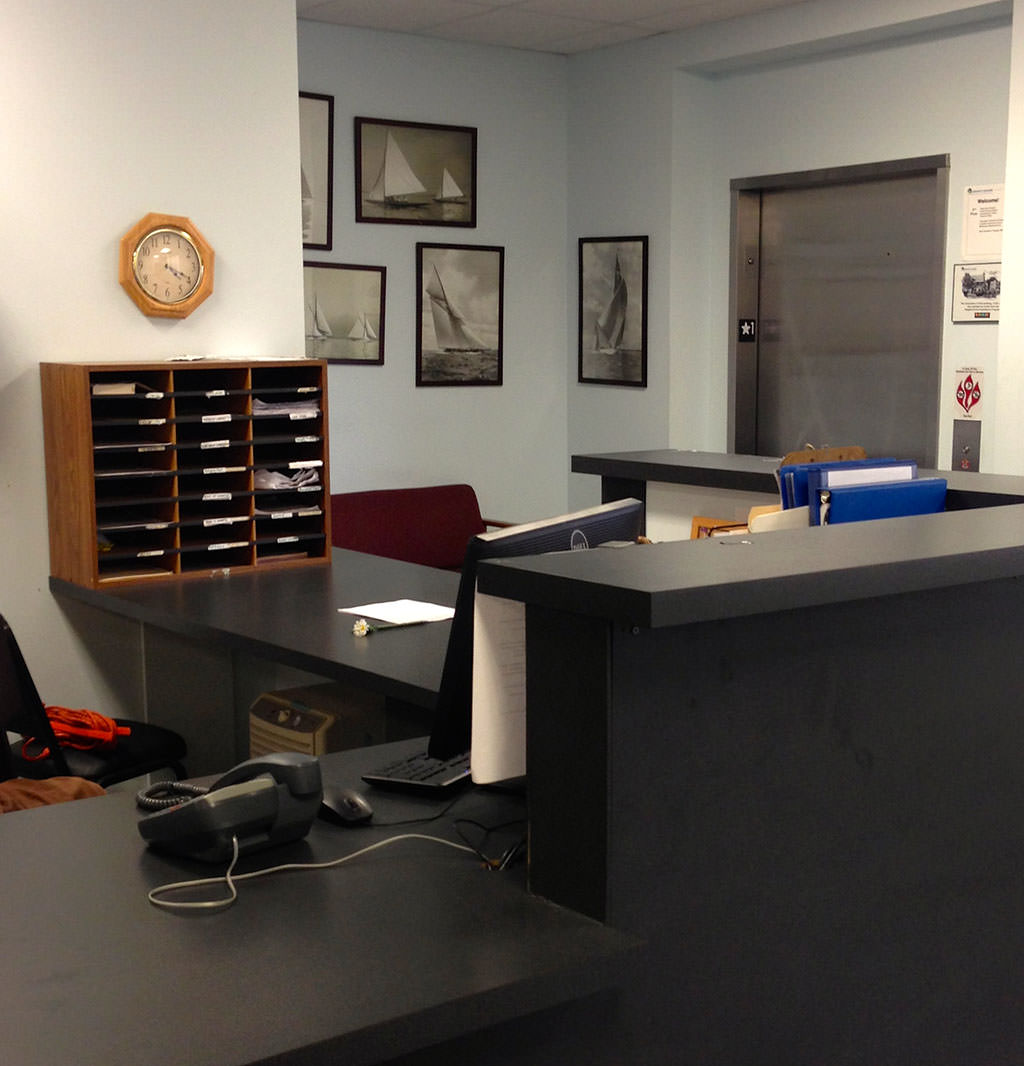 she had food and didn’t leave cigarettes burning.
she had food and didn’t leave cigarettes burning.
The thing that triggered her was that she really loved her daughter and wanted to see her daughter. When she moved from the group home to the apartment, she got a phone in her name. Her daughter had been looking for her too. The daughter was grown up, had gotten married, and had children. But her daughter had never forgotten where she had come from. The mother and daughter got together for the first time since the adoption. By this time the mother had cancer. She didn’t have very long to live. She met her child and grandchildren. Things went well. She got to have the things that she wanted.
We have a lot of those stories. Some are not as dramatic. But every worker here has a story that is as strong as that one. Part of it is because this is a group of folks who know it is safe to work with people who have been called “crazy”. You see them as individuals who have so many things going against them and in so many ways. We can help them have a happy life. It may not be the happy life that anyone would choose for them, but it is a life — one they would like.
I was going to retire, but we had some changes in the system. It’s good in the sense that we can help more people. But it’s not so good in the sense that some of our older people will not get the level of service we want. We have to spread the service more. One of my personal things is to make sure as our folks are aging that they are comfortable and get to do the kind of things they want to do. They don’t feel lost. They are not frightened during this change period. I can help them.
4. What was your worst day as a social worker in psychosocial rehabilitation?
I think some of our worst days were when we were concerned that the agency could close because of funding. We had all these people and this was their home. This was their family. This was what they relied on. This was their sense of security. When those funding things were happening, they were terrified. Watching people in terror say, “What am I going to do?” This would be my worst day.
One of the worst days was when the Reagan administration cut 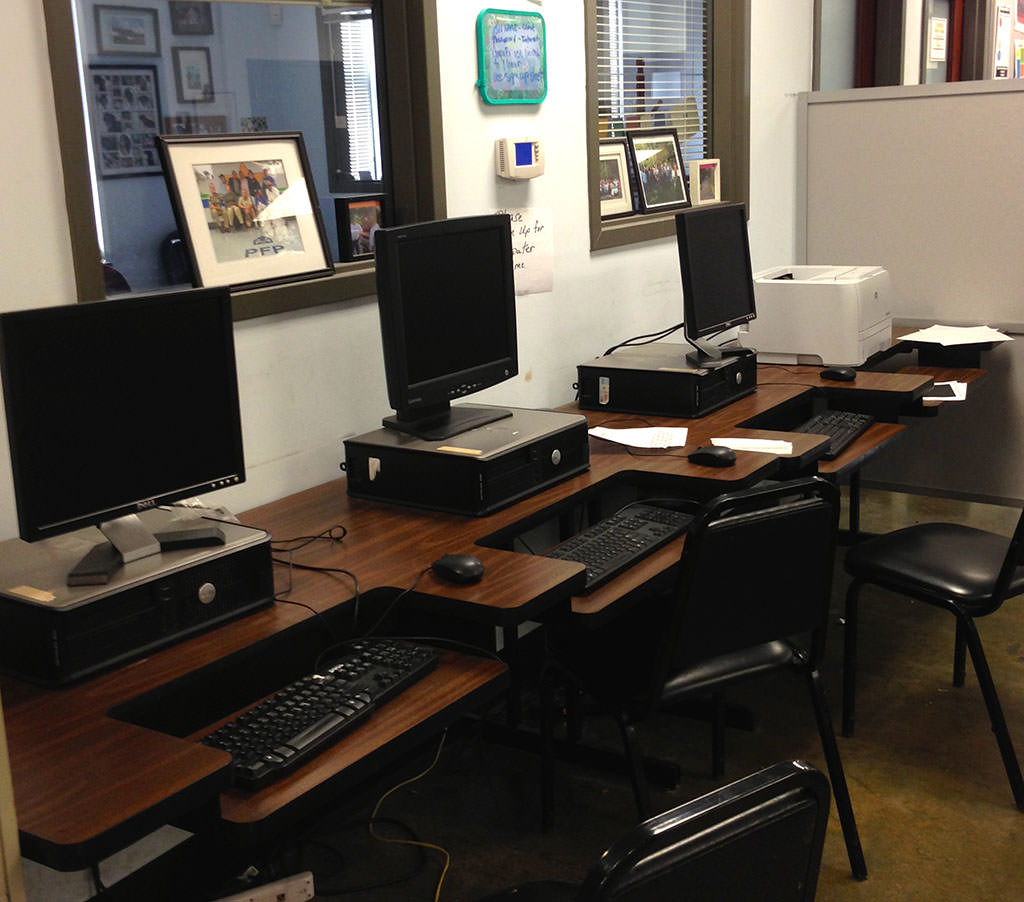 people off of welfare. We had people who were working two hours a week and the government was calling that gainfully employed. Then those people were cut off. The number of suicides was incredible. Some of our folks’ relationships were so strong that they were able to stay with each other for a short period of time. But it was pretty horrible. It wasn’t caused by anything here but by changes nationally.
people off of welfare. We had people who were working two hours a week and the government was calling that gainfully employed. Then those people were cut off. The number of suicides was incredible. Some of our folks’ relationships were so strong that they were able to stay with each other for a short period of time. But it was pretty horrible. It wasn’t caused by anything here but by changes nationally.
Another hard time is knowing that people who are mentally ill tend to die ten or twenty years younger than others. The medications, the life style, the poverty, all contribute. We have people who die. Those are the worst days.
Some of our best days are also our worst days. There was one man I worked with for a long time. He just passed away with a heart attack. The good part was that he was reunited with his family. His mom was in her eighties. He was able to help her and take care of her. They took care of each other. He had a pet. He had a happy life. He died in the midst of his family. That is cool. But I guess what I’m saying is that some times the worst day can also be a good day.
5. How did you survive your worst day?
I survive because I know that things are usually better in the morning, because I don’t think that I am out here by myself, because I have friends who are supportive to whatever I want to do.
When I started here my husband got sick. He got very ill. During that time, people here were very supportive of me. These are the people that I am supposed to take care of. It’s not just that you are a social worker and you are supposed to take care of people. You are all in this soup together. You are in life together. As much as I help people, I get a lot of support back. If I have a bad day, I know that I  had a bad day today, but we’ll just take it from the top tomorrow. Sometimes it is easy, but some times it is harder.
had a bad day today, but we’ll just take it from the top tomorrow. Sometimes it is easy, but some times it is harder.
There are some days when I might not have wanted to go to work because I didn’t want bad news. But I was never not going to go to work. It was inevitably better to go than to not go.
We have folks who get discouraged. They work really hard and some rug will get pulled out from under them. But the focus is that, “You did so well before, you can do it again well. You can make a choice and if it is a bad choice, you can hopefully take a different route the next time.”
A lot of our folks might have gone to jail or done things when they were sick, and they are ashamed even if they don’t remember what happened. But we are able to tell them that they are not going to do those things that got them into that situation. Here they are being supported.
Sometimes we get people who are mandated by the court to come here. We tell them we are sorry, but if that is the worse thing that they have in their life, that is not bad. We are always reframing and dealing with things.
I have a guy that I’ve worked with for about twenty years. But his confidence was nonexistent. Everyone in his family was telling him not to do this and that because he would screw it up. A family member would help him out every day and drop him off.
When a new drug came out, he started taking it and he finally got his control of his brain and his mind. He was able to do things because of the drug. It took a long time, but he finally started volunteering and he was able to go out to the real world and do well.
So there is an ebb and flow of human interaction. You see a whole range. It is really wonderful place.
- « Previous person: Andrea Adams
- » Next person: Senait Zarazion